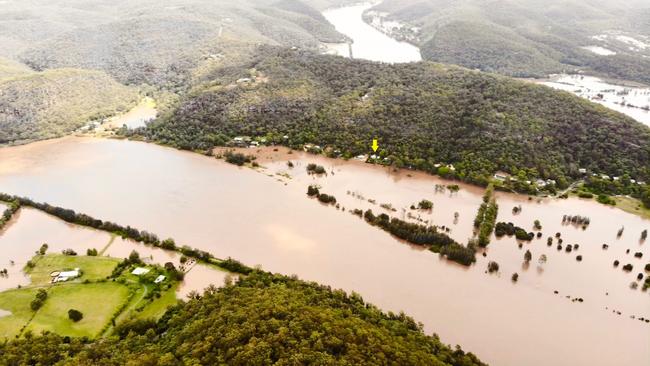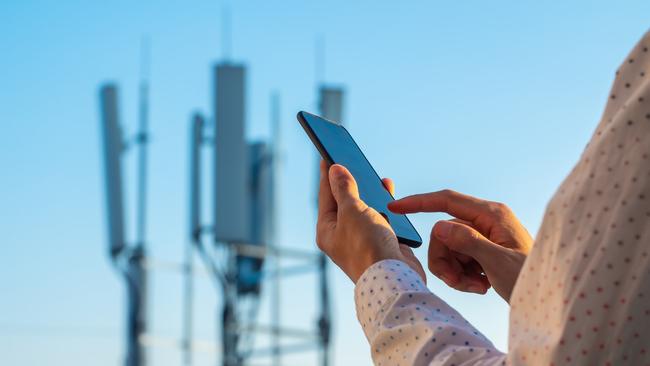TPG turns 5G network into a giant flood and storm monitoring sensor
Australia’s third biggest telco has partnered with University of Technology Sydney to transform its 5G network into a sensor to detect flooding disasters, potentially saving lives.

Australia’s third biggest telco, TPG Telecom, is turning its 5G network into a giant sensor to protect homes and businesses against flooding disasters, and potentially save lives.
TPG has partnered with the University of Technology Sydney to launch the project, which performs more precise flood and storm monitoring than the Bureau of Meteorology thanks to radiophysics.
NSW State Emergency Service has been trialling the technology, which dramatically expands the scope of 5G beyond voice calls, text messaging and internet access.
TPG head of radio access network (RAN) strategy Jeff Owen likened the technology to “sensorless sensing”.
“You’ve got a situation where wherever there’s (5G) coverage, you have this capability. You don’t have to go and deploy physical devices to do this once you’ve got the capability in the network,” Mr Owen said.
While 5G has delivered faster connections to mobile devices and other gadgets, it has yet to deliver the transformation it initially promised to everyday lives, with most of its touted applications tending towards the more far-fetched, such as self driving cars, autonomous factories and drones.
“5G came with all sorts of things around remote control and drones, self piloted vehicles … whatever you want to call it. The thing is, every other use case outside talk, text and internet access has at best been niche,” Mr Owen said.
“There’s not any mainstream revenue or application used outside ‘we just do it much better’. And this is where it stacks better than 3G. 5G is better than 4G. But we’re always looking for a widespread, widely applicable, very powerful use case that goes beyond just a niche use outside talk, text and internet access.”
Mr Owen said the flood and storm monitoring relied on information that was already been transmitted across the 5G network, therefore it didn’t place any stress on the telco.
“There’s no impact to existing services. It’s just getting more information – almost accidentally, if you will – that comes back from the radio signals we already have so we don’t need to allocate dedicated spectrum or anything like that.
“We think about it like a radar because a radar is something that can gather information about something out there in the environment, without being in contact with that something.
“The way it actually works, is our networks have a downlink from the base station or the tower if you will, to the mobile, and then we have an uplink from the mobile back to the base station. So we can gather information. And from both of those links that will tell us something about the environment.”

This enables the extraction of precise weather details, such as rainfall, water levels, and river flows, by detecting minuscule environmental changes in wireless signals transmitted through 5G mobile networks.
By combining these signature changes with artificial intelligence and the NSW Spatial Digital Twin, UTS researchers created a 4D visualisation, showing in real-time how rainfall and potential flooding evolve and affect communities and critical infrastructure like roads and transport.
They say the technology could potentially save lives by vastly improving and expediting decision-making for first responders, or through the use of public warning systems and alerts used by NSW SES.
Crucially, it will complement current meteorological tools that apply complex mathematical algorithms to simulate how flood and rainfall may evolve over time, giving real-time input into the process.
TPG chief technology officer Giovanni Chiarelli said: “By harnessing the power of 5G technology, we can revolutionise flood prediction capabilities in Australia and demonstrate the transformative potential of telecommunications networks and world-class research in addressing real-world challenges.
“As we continue to push the boundaries of innovation, we remain committed to driving positive change and contributing to a safer, more resilient future for communities across Australia,” he said.
Testing of the technology – which was funded through Transport for NSW’s Smart
Places Acceleration Program, a $45m special reservation of the Digital Restart Fund – is underway along Sydney’s Parramatta and Georges Rivers, and will continue as the centrepiece project of UTS and TPG Telecom’s Network Sensing Lab.
TPG Telecom and UTS have committed to a long-term partnership to fully develop, commercialise, and explore ways to deliver a cost-effective solution for large-scale flood sensing, prediction, and other applications.
“The TPG-UTS Network Sensing Lab will translate research into industrial solutions,” said UTS distinguished professor Jay Guo, who will lead the lab’s research.
“There are limitless opportunities for network sensing technology aside from rainfall monitoring and flood protection. They include traffic management, object and intruder detection for smart transport, collision avoidance, search and rescue and health and sports monitoring.”




To join the conversation, please log in. Don't have an account? Register
Join the conversation, you are commenting as Logout